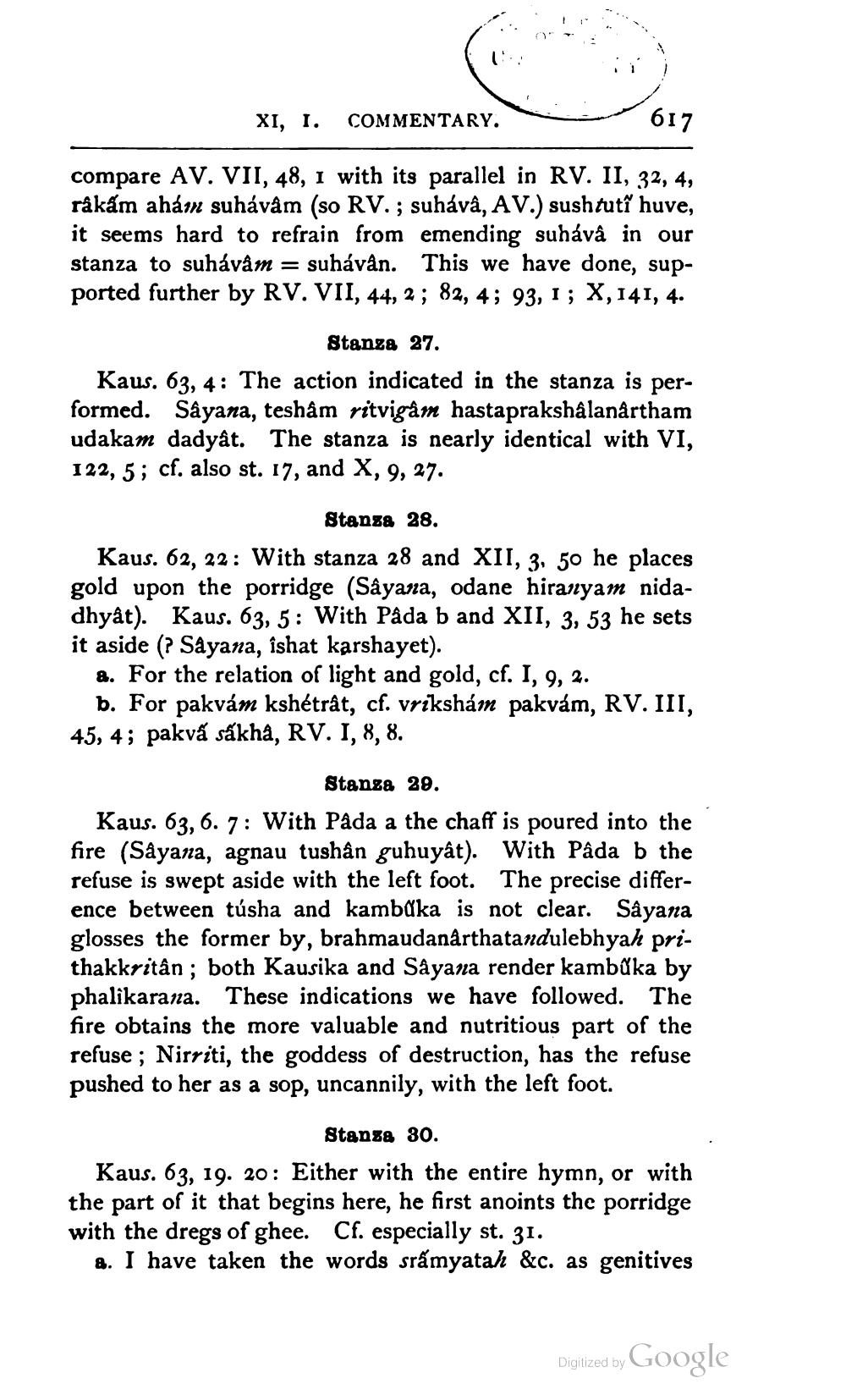________________
617
XI, I.
compare AV. VII, 48, 1 with its parallel in RV. II, 32, 4, râkẩm ahám suhávâm (so RV.; suhávâ, AV.) sushṭutî huve, it seems hard to refrain from emending suhávâ in our stanza to suhávám = suhávân. This we have done, supported further by RV. VII, 44, 2; 82, 4; 93, I; X, 141, 4.
COMMENTARY.
Stanza 27.
Kaus. 63, 4: The action indicated in the stanza is performed. Sâyana, teshâm ritvigâm hastaprakshâlanârtham udakam dadyât. The stanza is nearly identical with VI, 122, 5; cf. also st. 17, and X, 9, 27.
Stanza 28.
Kaus. 62, 22: With stanza 28 and XII, 3, 50 he places gold upon the porridge (Sâyana, odane hiranyam nidadhyât). Kaus. 63, 5: With Pâda b and XII, 3, 53 he sets it aside (? Sâyana, îshat karshayet).
a. For the relation of light and gold, cf. I, 9, 2.
b. For pakvám kshétrât, cf. vrikshám pakvám, RV. III, 45, 4; pakva sakha, RV. I, 8, 8.
Stanza 29.
Kaus. 63, 6. 7: With Pâda a the chaff is poured into the fire (Sâyana, agnau tushân guhuyât). With Pâda b the refuse is swept aside with the left foot. The precise difference between túsha and kambika is not clear. Sâyana glosses the former by, brahmaudanârthatandulebhyah prithakkritân; both Kausika and Sâyana render kambuka by phalikarana. These indications we have followed. The fire obtains the more valuable and nutritious part of the refuse; Nirriti, the goddess of destruction, has the refuse pushed to her as a sop, uncannily, with the left foot.
Stanza 30.
Kaus. 63, 19. 20: Either with the entire hymn, or with the part of it that begins here, he first anoints the porridge with the dregs of ghee. Cf. especially st. 31.
a. I have taken the words sramyatah &c. as genitives
Digitized by Google




